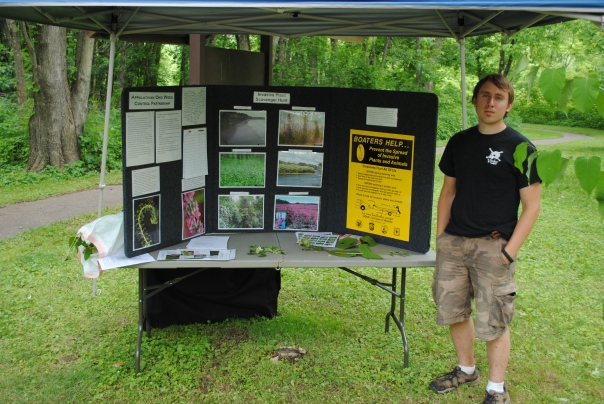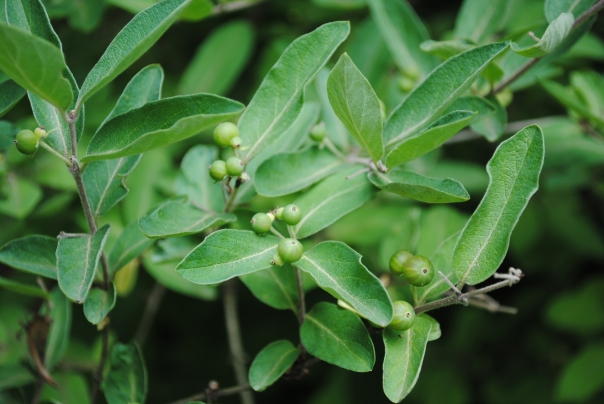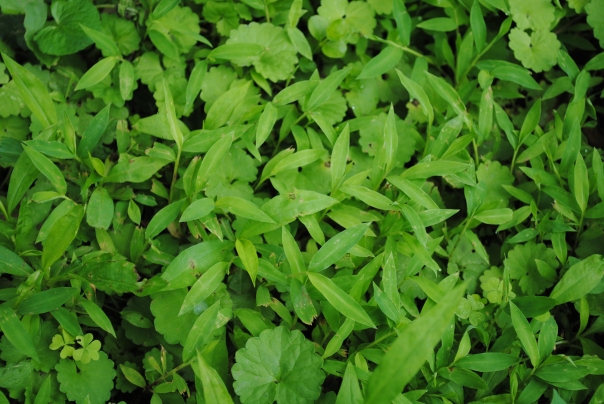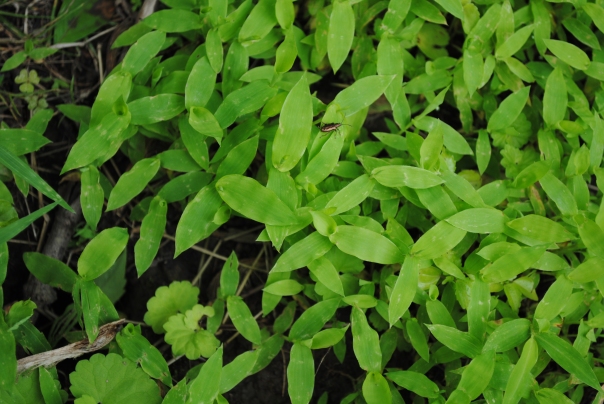Blog Archives
Taking Back the Yard: Dealing with Invasive Plants
There’s nothing more frustrating for gardeners than discovering that their well-planned plots or rolling lawns have been infiltrated by invasive plant species, the perennial marauders of the back yard set. While many people panic and immediately start yanking or mowing the intruders when they first make their appearance, gardening expert Karen Snetselaar, Ph.D., chair and professor of biology at Saint Joseph’s University, advises that it’s best to investigate the plant that’s choking your columbines or blighting your lawn before complicating the problem with an errant course of action.
See full article here… http://www.sju.edu/news-events/news/taking-back-yard-dealing-invasive-plants
Making a difference in your yard – swap out invasive common buckthorn and try a native plant instead
By RICK MEADER AnnArbor.com (MI), Thu, Jun 27, 2013 11:10 pm
http://www.annarbor.com/home-garden/making-a-difference-in-your-yard—trade-a-native-for-an-invasive/
Ailanthus tree’s status as invasive species offers lesson in human interaction
Researchers point to ailanthus as a prime example of the dangerous unpredictability of a non-native plant’s introduction to habitats and humans’ inadvertent aid in its spread and domination.
Knotweeds are weeds
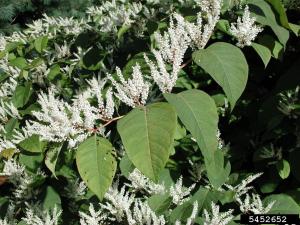 Though many plant species are in bloom this time of year, you may have noticed one particularly imposing species that has seemingly taken over lowland areas, mowed hill sides, and roadways. Showy sprays of small white flowers along the branches of this plant make it easy to recognize from a distance. Not to mention that it is a robust perennial herb that grows in dense patches, often to a height of 3-12 feet. Although this plant’s name may make you think otherwise, Japanese k”not”weed is a weed!
Though many plant species are in bloom this time of year, you may have noticed one particularly imposing species that has seemingly taken over lowland areas, mowed hill sides, and roadways. Showy sprays of small white flowers along the branches of this plant make it easy to recognize from a distance. Not to mention that it is a robust perennial herb that grows in dense patches, often to a height of 3-12 feet. Although this plant’s name may make you think otherwise, Japanese k”not”weed is a weed!
 Japanese knotweed (Polygonum cuspidatum) was introduced to the United States, from Asia, in the 1800s as an ornamental plant where it had been used for erosion control and landscape screening. However, the tall, dense growth habit of this plant species drastically alters the landscape by out-competing other vegetation, which decreases available food and habitat for wildlife. It can also interfere with water drainage, degrade pastures, and cause structural damage by sprouting through nearby pavement and foundations. During the dormant season, infested areas become covered in a dense mat of dried stems that create a fire hazard.
Japanese knotweed (Polygonum cuspidatum) was introduced to the United States, from Asia, in the 1800s as an ornamental plant where it had been used for erosion control and landscape screening. However, the tall, dense growth habit of this plant species drastically alters the landscape by out-competing other vegetation, which decreases available food and habitat for wildlife. It can also interfere with water drainage, degrade pastures, and cause structural damage by sprouting through nearby pavement and foundations. During the dormant season, infested areas become covered in a dense mat of dried stems that create a fire hazard.
Japanese knotweed tolerates a variety of ecological conditions but prefers wet soil in low places along streams and rivers. It aggressively spreads by rhizomatous roots and stem fragments that are transported by stream bank erosion, through mechanical treatment efforts, such as mowing, and by rhizome contaminated fill dirt.
Once established, Japanese knotweed is extremely difficult to control; so, it is important for landowners to detect new infestations early and begin treatment right away. Identification of Japanese knotweed is easy this time of year because of the showy white sprigs of small flowers. Stems are reddish, hollow, and jointed at a swollen node. The leaves are 6 inches long, broad and oval-shaped with a pointed tip. They are alternately attached to the stem, which dies back each fall, growing a new stem the next year.
Another knotweed species, giant knotweed (Polygonum sachalinense), is known to occur in our area and can hybridize with Japanese knotweed to form, Bohemian knotweed (Polygonum x bohemicum). Both giant knotweed and Bohemian knotweed are similar in appearance to Japanese knotweed.
Visit http://www.nps.gov/plants/alien/fact/faja1.htm and http://www.kingcounty.gov/environment/animalsAndPlants/noxious-weeds/weed-identification/invasive-knotweeds/japanese-knotweed.aspx for more information on Japanese Knotweed, giant knotweed, Bohemian knotweed, and other invasive species. You can also contact Eric Boyda of the Appalachian Ohio Weed Control Partnership by phone at 740-534-6578 or email at appalachianohioweeds@gmail.com. Article author: Aurora Roemmich
Researcher looks for honeysuckle blight
A message from Dr. Richard L. Boyce:
As I noted last year about this time, this year I’m again seeing a lot of honeysuckle leaf blight on Amur honeysuckle (Lonicera maackii) in the Cincinnati area. One additional wrinkle is that I’m now seeing it in an area where I’ve also found a lot of dead honeysuckle. This is an area called Woodland Mound Park, just east of Cincinnati, where I’ve been working since 2005. I did not collect data there last year, so I don’t know if the leaf blight led to these particular honeysuckles dying, but let’s just say that circumstantial evidence is high, since there was a lot of blight all over the area last year. This is also the first time I’ve seen enough dead honeysuckles to notice (mainly medium-sized bushes a few feet high).
Once again, I’ve mainly seen the blight on vigorous growth, i.e., on stems that haven’t yet lignified.
I would ask you to again report any sightings of leaf blight you see on any honeysuckle species. I’ve included a couple of pictures that may help. I spent the last two weeks in in New England, where I mainly saw Tatarian and Japanese honeysuckle, and I didn’t notice any leaf blight there.
================================
Richard L. Boyce, Ph.D.
Director, Environmental Science Program
Professor
Department of Biological Sciences, SC 150
Northern Kentucky University
Nunn Drive
Highland Heights, KY 41099 USA
859-572-1407 (tel.)
boycer@nku.edu
=================================
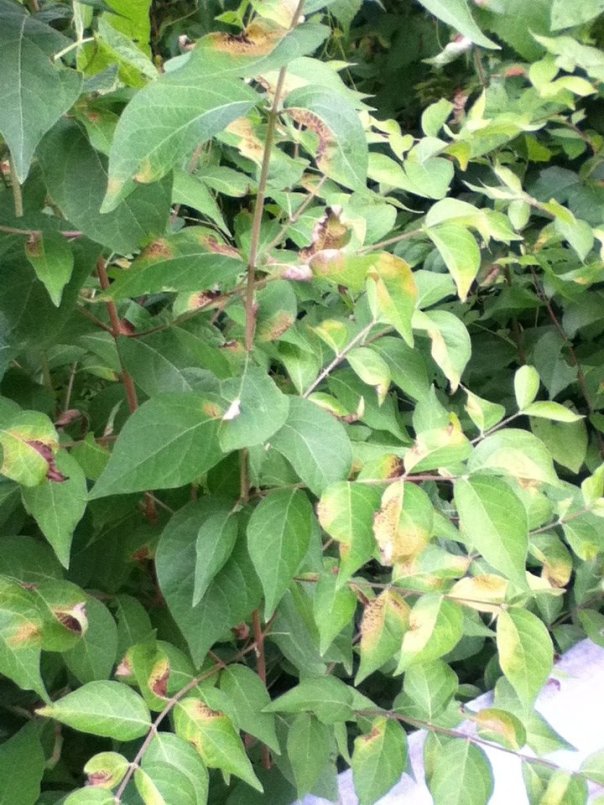
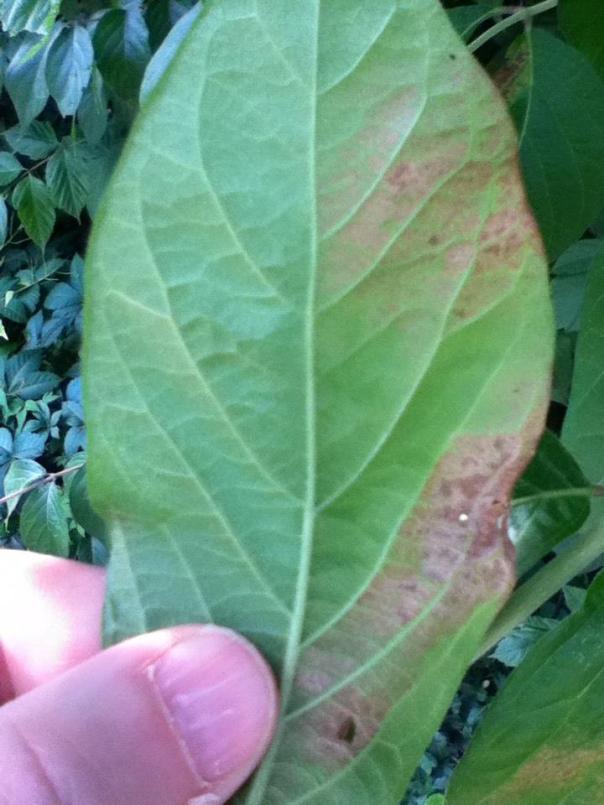
Volunteers needed in the Ohio River Basin to map purple loosestrife
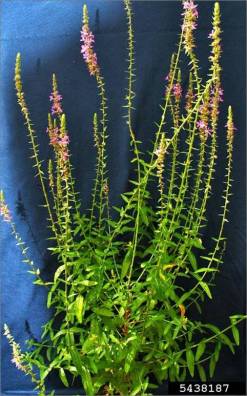 CHIP-N (the Central Hardwoods Invasive Plant Network) is a partnership between the Appalachian Ohio Weed Control Partnership, River to River Cooperative Weed Management Area, and Southern Indiana Cooperative Invasive Management. CHIP-N and the Ohio River Basin Fish Habitat Partnership are working together to coordinate the volunteer mapping of purple loosestrife in the Ohio River Basin. This data will help local and regional managers determine the best management strategies and identify possible biocontrol release points. Purple loosestrife is very easy to identify from July-September and would take minimal effort to report it while conducting other activities (water sampling, surveying, canoeing, hiking, etc). If you are interested in participating, please contact Eric Boyda (appalachianohioweeds@gmail.com, 740-534-6578) and he will forward you on more information about what data to collect and how to easily identify purple loosestrife.
CHIP-N (the Central Hardwoods Invasive Plant Network) is a partnership between the Appalachian Ohio Weed Control Partnership, River to River Cooperative Weed Management Area, and Southern Indiana Cooperative Invasive Management. CHIP-N and the Ohio River Basin Fish Habitat Partnership are working together to coordinate the volunteer mapping of purple loosestrife in the Ohio River Basin. This data will help local and regional managers determine the best management strategies and identify possible biocontrol release points. Purple loosestrife is very easy to identify from July-September and would take minimal effort to report it while conducting other activities (water sampling, surveying, canoeing, hiking, etc). If you are interested in participating, please contact Eric Boyda (appalachianohioweeds@gmail.com, 740-534-6578) and he will forward you on more information about what data to collect and how to easily identify purple loosestrife.
This is a great opportunity for organizations to get volunteers interested in reporting and mapping invasive species and possibly expand their programs in the future to include more or different species. Please forward this on to anyone you think would be interested.
AOWCP success: invasive plant scavenger hunt
On Saturday June 8th, the AOWCP set up an invasive plant scavenger hunt for children for the Play Outside Weekend on the Wayne National Forest in the Leith Run recreation area (Washington County). We had a lot of fun working with the children and their parents (approximately 30 children, 20 adults), and I think everyone learned quite a bit about invasive plants. It was rewarding to find out that many of the children there already knew what invasive organisms were. Repeat messaging works, and it’s important that we keep youth informed.
Evan Siembida, a summer intern from Hocking College, stands infront of our display at the scaveger hunt starting point.
Phenology updates: bush honeysuckle, Japanese stiltgrass, hairy jointgrass, hydrilla, orange daylily, and bohemian knotweed
Bush honeysuckle (Lonicera spp.)– fruiting, green berrys
Japanese stiltgrass (Microstegium vimineum) – has germinated and is anywhere from 1 to 6 inches tall. This link might help ID it http://www.nps.gov/Plants/alien/fact/mivi1.htm
Hairy jointgrass (Arthraxon hispidus) – germinated, around 1-4 inches tall. Here is a link to help identify it http://www.ppws.vt.edu/scott/weed_id/arahi.htm
Hydrilla (Hydrilla verticillata) – has emerged
Orange daylilies (Hemerocallis fulva) – flowerbuds forming
Bohemian knotweed (Polygonum x bohemica) – Hybrid between japanese knotweed and giant knotweed.
Aquatic Invasive Species Webinar Series
From:http://us1.campaign-archive2.com/?u=54e5ae3c10de83ec37a9b8e26&id=5bc95ed5ed&e=
Aquatic plants in water gardens and along the edges of lakes, ponds, and streams are gaining popularity with many gardeners. These “wet-loving” plants can bring terrific visual appeal and drama to the residential landscape, but some species have invasive tendencies that threaten the ecology of our natural areas.
If you’re a water garden hobbyist or interested in becoming one, this two-part webinar series is for you. In the first webinar, you will learn about aquatic invasive plants and the problems they can cause, how science is being used to assess the ecological risk behind exotic plants, and practical steps you can take to prevent the spread of aquatic invasive species.
In the second webinar, you will learn about design techniques for creating spectacular aquatic landscapes, and about non-invasive aquatic plants that can be used in place of invasive species.
The Science Behind Aquatic Invasive Plants
An Overview of Aquatic Invasive Plants
Greg Hitzroth, Organisms in Trade Outreach Specialist, Illinois-Indiana Sea Grant and Illinois Natural History Survey
Assessing the Ecological Risk of Aquatic Plants
Reuben Keller, Assistant Professor, Loyola University Chicago
Preventing the Spread of Aquatic Invasive Species
Greg Hitzroth, Organisms in Trade Outreach Specialist, Illinois-Indiana Sea Grant and Illinois Natural History Survey
Building a Better Water Garden
Creating Beautiful and Environmentally Responsible Water Landscapes
Heidi Natura, Founder and Partner, Living Habitats
Alternatives for Invasive Aquatic Plants
Bob Kirschner, Curator of Aquatic Plant & Urban Lake Studies, Chicago Botanic Garden
link to register: http://us1.campaign-archive2.com/?u=54e5ae3c10de83ec37a9b8e26&id=5bc95ed5ed&e=
Help stop hydrilla from invading Ohio’s inland bodies of water
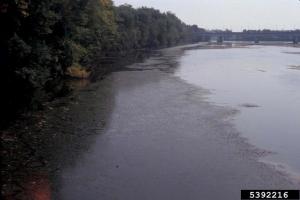 Have you been noticing the dense thick mats of vegetation growing along the Ohio River? You probably have fouled your motor boat prop while boating through it or noticed your favorite fishing spot being overrun. If given the opportunity, hydrilla will overrun almost any body of water.
Have you been noticing the dense thick mats of vegetation growing along the Ohio River? You probably have fouled your motor boat prop while boating through it or noticed your favorite fishing spot being overrun. If given the opportunity, hydrilla will overrun almost any body of water.
Thought to be native to India and Korea, hydrilla (Hydrilla verticillata) was first introduced to the U. S. in the 1950s for use in aquariums. Some of the hydrilla spread can be attributed to aquarium hobbyists discarding unwanted aquarium systems into natural water bodies. However, hydrilla is mostly spread by vegetation fragments that get caught in boats and boating equipment. Since the 1950s, hydrilla has spread throughout much of the United States where it is confined to slow-moving, freshwater bodies, such as the Ohio River and the Florida Everglades.
 Hydrilla affects the ecosystem by altering water chemistry, which can lead to large fish-killing events. It requires less sunlight to produce food, giving it a competitive advantage over native vegetation; in addition, it grows in a dense mat that shades-out other submersed plant species. Hydrilla reduces water flow by clogging irrigation and flood-control canals and culverts; and has become a major obstacle in hydroelectric generation. Economic costs of hydrilla are estimated in the millions due to lost recreational opportunities, and maintenance costs associated with irrigation and hydroelectric works.
Hydrilla affects the ecosystem by altering water chemistry, which can lead to large fish-killing events. It requires less sunlight to produce food, giving it a competitive advantage over native vegetation; in addition, it grows in a dense mat that shades-out other submersed plant species. Hydrilla reduces water flow by clogging irrigation and flood-control canals and culverts; and has become a major obstacle in hydroelectric generation. Economic costs of hydrilla are estimated in the millions due to lost recreational opportunities, and maintenance costs associated with irrigation and hydroelectric works.
 To identify hydrilla, look for submersed plants forming dense mats at the surface of the water. Leaves are small, green, slightly translucent, and often have saw-like edges. The mid veins of the leaves are often tinged red and have sharp teeth. Leaves are attached to the stem in whorls of 4-8, but predominately 5. Vegetation near the surface has a pipe cleaner like appearance that is approximately one inch in diameter. If the plant is dug up, a small potato like tuber can be found under the mud.
To identify hydrilla, look for submersed plants forming dense mats at the surface of the water. Leaves are small, green, slightly translucent, and often have saw-like edges. The mid veins of the leaves are often tinged red and have sharp teeth. Leaves are attached to the stem in whorls of 4-8, but predominately 5. Vegetation near the surface has a pipe cleaner like appearance that is approximately one inch in diameter. If the plant is dug up, a small potato like tuber can be found under the mud.
Because colonies often start near boat ramps, it is important to prevent the transportation of this nuisance species and clean all recreational equipment. When you leave a body of water:
- Remove any visible mud, plants, fish or animals before transporting equipment
- Eliminate water from all equipment before transporting (motor, livewell, baitbucket, boots, and waders)
- Clean and dry anything that came in contact with water (boats, trailers, equipment, clothing, dogs, etc) with hot water that is at least 104 degrees (for dogs, use as warm of water as possible and brush its coat) or a high pressure sprayer. If possible, allow to dry for 5 days before moving to a new body of water.
- Never release plants, fish, or animals into a body of water unless they came out of that body of water.
More information about hydrilla can be found at:
King County: www.kingcounty.gov/environment/animalsandplants/noxious-weeds/weed-identification/hydrilla.aspx
University of Florida’s Center for Aquatic and Invasive Plants: http://plants.ifas.ufl.edu/node/183
Washington State Department of Ecology: www.ecy.wa.gov/programs/wq/plants/weeds/hydrilla.html
To report any inland populations of hydrilla not on the Ohio River or to have any additional questions answered, contact Eric Boyda at appalachianohioweeds@gmail.com or 740-534-6578.



